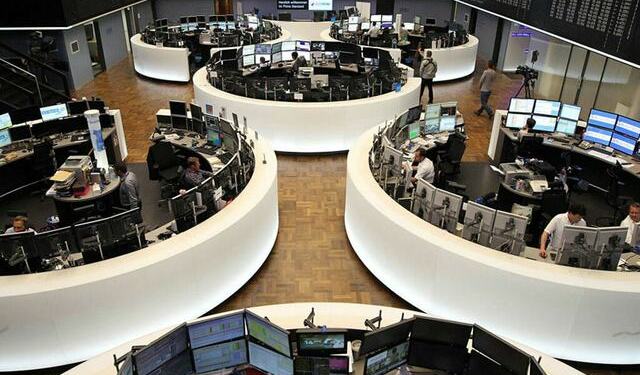 © Reuters. FILE PHOTO: A street food vendor waits for customers in front of a board with job notices in the area known for housing migrant workers in Tongzhou district of Beijing
© Reuters. FILE PHOTO: A street food vendor waits for customers in front of a board with job notices in the area known for housing migrant workers in Tongzhou district of BeijingBy Ross Finley
LONDON (Reuters) – Global inflation is finally on the rise, the bond market has apparently declared, but the data do not yet point firmly to that conclusion, suggesting the low trend in place since the financial crisis may linger for a while.
What the U.S. bond market appears to be reacting to as well is a different kind of worry, notably trillions of dollars worth of extra debt supply to digest from a U.S. administration that has cast aside fiscal restraint with tax cuts and new spending.
Indeed, for all the optimism about a punchy global economic upturn in which an exceptionally long list of countries are expanding at the same time, the two biggest central banks are due to keep running completely opposing policy this year.
Faced with robust U.S. growth and now a sudden huge amount of fiscal stimulus in the pipeline, the Federal Reserve is likely to raise interest rates three times in 2018, with rising speculation around a fourth hike before the year is out. [ECILT/US]
But the European Central Bank, trying to generate inflation out of a euro zone economy that is now booming by any historical measure, is still pouring on stimulus, buying 30 billion euros of bonds a month through September at least. It is not likely to raise interest rates until well into 2019. [ECILT/EU]
Part of that ongoing sharp divergence in policy of course is because the U.S. economic expansion is more mature. And at 4.1 percent, unemployment is close to the lowest it can go, and so is more likely to push up inflation through higher pay.
But for two similar consumer-based economies, their core inflation rates, at least so far, are forecast to also remain similar and historically very low.
The latest Reuters surveys of private sector economists, taken in the last week, show no change to the inflation outlook across major economies.
Not a single respondent had 3 percent or higher for U.S. core PCE inflation, the measure the Fed targets at 2 percent, this year or next. The median for 2019 has been stuck at 2 percent since monthly polling started nine months ago. (reuters://realtime/verb=Open/url=cpurl://apps.cp./Apps/econ-polls?RIC=USPCEAP)
Of course, that does not mean there is no chance of a sudden acceleration nobody foresaw. But several analysts who have delved deeply into recent U.S. employment data and the prospect of a surge in wage inflation are recommending calm.
Rabobank has recently run two models on U.S. wage growth, forecasting it to peak at 3.0 to 3.3 percent in the next two years, not far above the 2.9 percent reported for January that triggered so much panic in bond markets a few weeks ago.
The highest median forecast for U.S. wage inflation in Reuters polls conducted over the past two years is between those two points, at 3.2 percent.
“While this is higher than current levels, it’s on the low end of the Fed’s preferred range of 3 to 4 percent,” noted Rabobank economists Hugo Erken and Stefan Koopman.
“At the same time, these models also show that we’re already getting close to the peak of the economic cycle. This means that the risks to economic growth, and eventually wage growth and inflation, are becoming increasingly tilted to the downside.”
The current U.S. economic expansion, already 102 months long, if it lasts another two years as many expect, will be the longest in more than 150 years.
Commerzbank (DE:) chief economist Jorg Kramer makes a broader point explaining why global inflation is likely to remain low. The main forces which have made modest wage rises and low prices the norm for a generation aren’t about to suddenly fall away.
“Thanks to globalization, and to an increasing extent digitalization, wage growth today is picking up less rapidly in response to low unemployment,” he wrote.
Their research concludes that a 1 percentage point fall in the U.S. jobless rate only lifts core inflation by 0.1 percentage point, which is “just one-third of the rate we might have expected before the global financial crisis.”
They come to a similar conclusion for the euro zone.
But a handful of others, like Fathom, a London-based consultancy, are forecasting big changes afoot.
“With our own analysis suggesting that most major economies were already operating above potential by the end of last year, two more years of substantially above-trend growth will cause inflation to rise faster than anticipated in many major economies,” wrote Fathom senior economist Brian Davidson.
Fathom has just changed their U.S. view to expect four Fed rate rises this year and four in 2019, from three and one.
“Our new figures may raise eyebrows, but it is important to remember that the U.S. is embarking on one of its largest fiscal expansions since the Second World War, at a time when the economy is already operating above capacity,” he noted.
Source: Investing.com



























